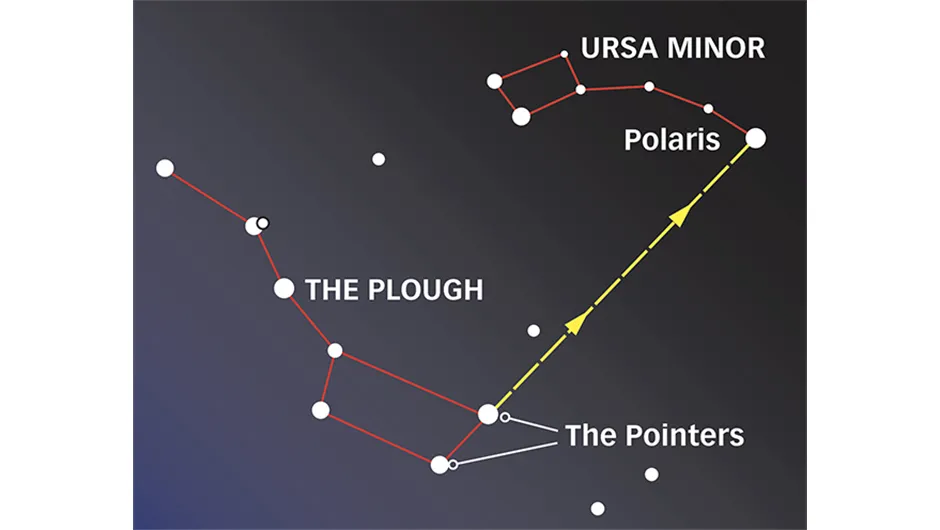Merak (Beta (β) Ursae Majoris) is the southernmost of the two stars in the Plough asterism - the other being Dubhe - that form the navigational pair known as ‘The Pointers’. They point at the Pole Star, Polaris (Alpha (α) Ursae Minoris).
Using stars to find other targets in this way is known as star-hopping and is a useful technique for locating interesting stars or conjunctions.

The name Merak means ‘the loins of the bear’ and despite its prominent position and beta designation it is actually the fifth brightest of the seven stars that form the familiar Plough pattern. Merak shines at mag. +2.4 (for more on this, read our guide to stellar magnitude).
The Plough is circumpolar from the UK: close enough to Polaris to never be able to set below the horizon. Consequently, it and Merak are always visible to the naked eye from the UK whenever the sky is dark and clear.
Another interesting star in the Plough to look out for is Mizar, the double star.
Facts about star Merak
Merak is a white sub-giant star of spectral classification A1 IV. It also shows unusually strong lines of certain metals in its spectrum. 'Metals’ in astronomy refers to elements heavier than hydrogen.
Merak is three times larger than the Sun, has a mass 2.7 times larger and a luminosity 63 times higher. It also has an infrared excess – indicating that it is likely to have a circumstellar disc surrounding it, which probably comprises orbiting dust.
The distance to Merak has been measured as 79.7 lightyears and it is one of five stars in the Plough asterism that belong to an association known as the Ursa Major Moving Group.

This group of five – all but Dubhe (Alpha (α) Ursae Majoris) and Alkaid (Eta (ε) Ursae Majoris) – have matching proper motions: a term that describes the direction and speed of movement of a star in space (see image at the very top of this article).
This indicates a probability that they are related, a group of stars along with others in the association, which would have formed together.
Pete Lawrence is an experienced astronomer and a co-host of The Sky at Night. This guide originally appeared in the February 2021 issue of BBC Sky at Night Magazine.
